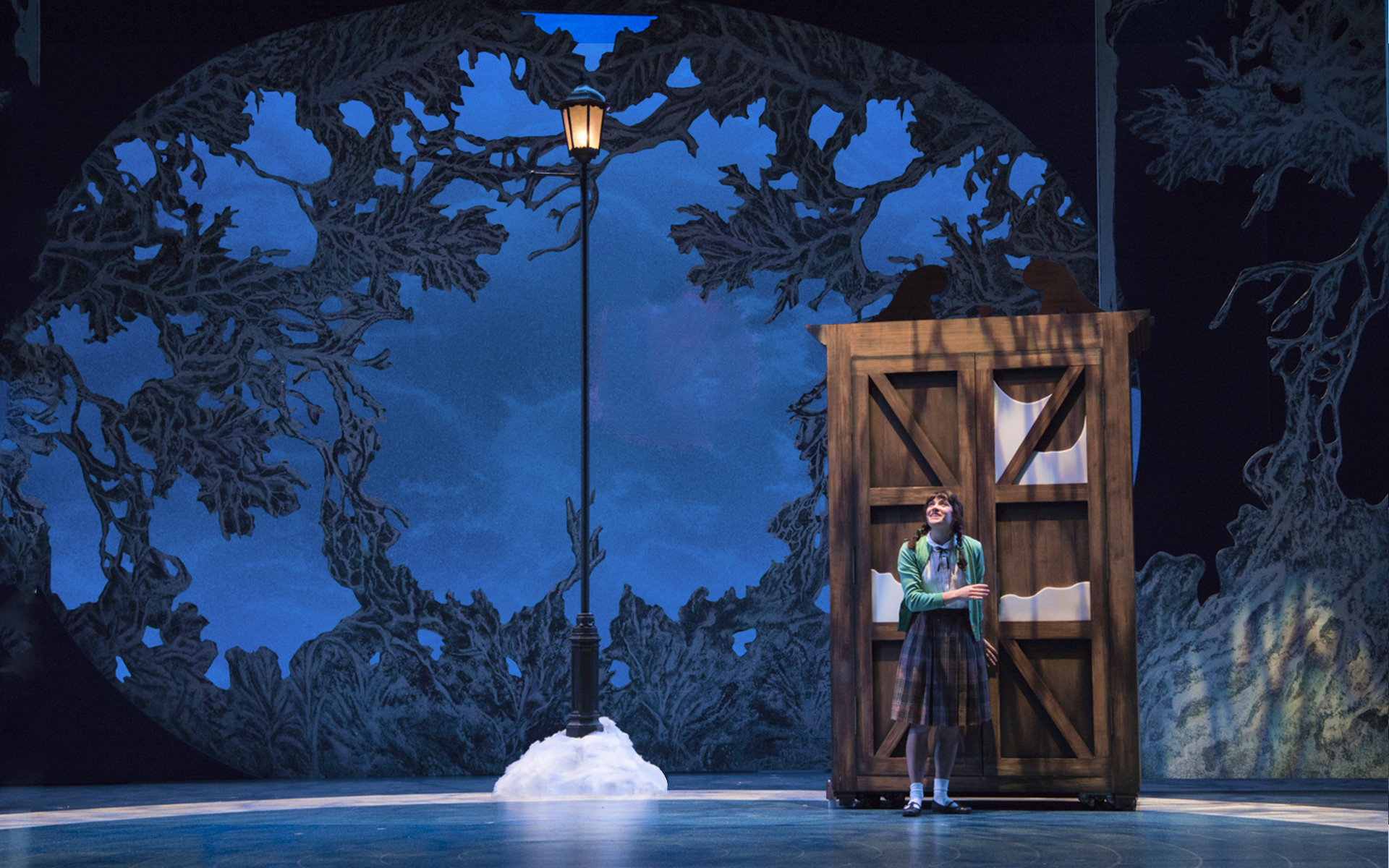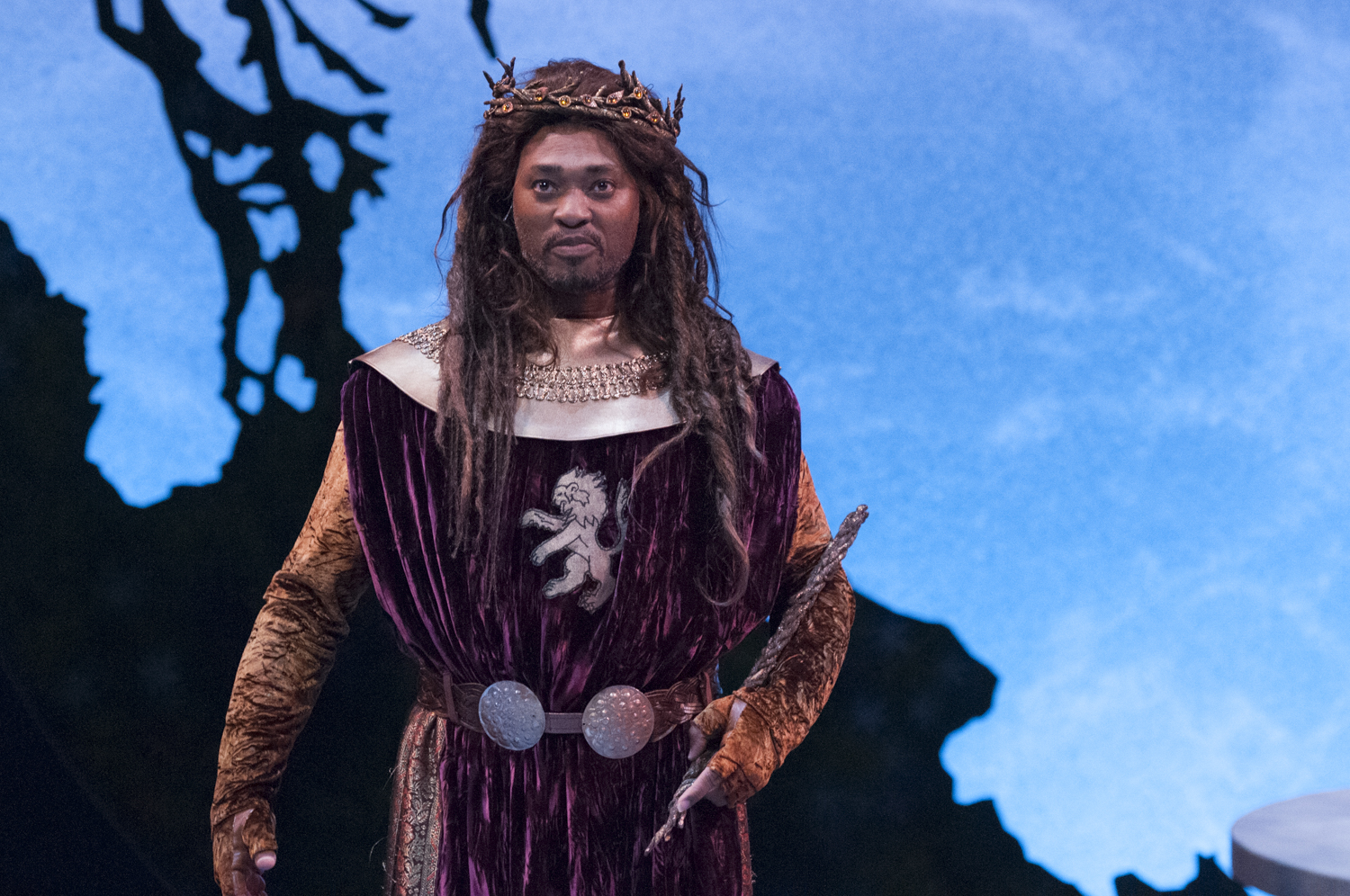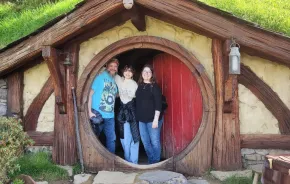
Bottom line
Seattle Children's Theatre's production of the musical The Lion, the Witch and the Wardrobe, which opened last week and runs through Dec. 11, brings the world of Narnia magically to life on stage with ingenious sets, fanciful costumes, high-quality acting, skillful choreography and live musical accompaniment. However, all these positive forces struggle against a complex story that tests the limits of what can be fully conveyed in a stage production for children, especially those unfamiliar with the storyline. If your familiy is planning to see the show, consider preparing by reading the classic C.S. Lewis novel together, watching the excellent 2005 movie or by refreshing your memory of the plot and characters.
Highlights
The production's cleverly designed sets do a fine job of setting the scenes and the contrast between two very different worlds. The play, as in the novel, opens on the first world, a staid house in the English countryside where four siblings — Peter, Susan, Edmund and Lucy — have been sent to live with a professor to wait out World War II. Soon enough, Lucy find that the back of a wardrobe in the house leads to the fantastical world of Narnia. Through her encounter with with the faun Mr. Tumnus, she learns that Narnia is stuck in perpetual winter by an evil witch.
In the Narnia scenes, layers of snow-sprinkled branches and dark lighting resemble a Japanese painting and evoke the magic afoot. The double-sided wardrobe — the portal between the house and Narnia — along with set pieces such as the house of Mr. and Mrs. Beaver (who become allies of the children), slide on and off stage and keep the story moving. As Lucy is joined in her Narnia adventures by her siblings, together they embark on a quest to find a powerful lion named Aslan.
Costumes are another high point in this show. While the siblings wear simple, period-appropriate clothing, many of the fantastical characters of Narnia stand out for creative costuming, including a wonderful centaur, a towering giant and a bat puppet. The costumes for Mr. and Mrs. Beaver and Mr. Tumnus cleverly encompass animal and human elements. Reindeer pulling the White Witch's sleigh are uncannily reindeer-like.
Kids will love the skillful stage choreography in sword-fighting scenes, as the children join with Aslan and Narnia allies to battle the White Witch. Even today's children, who are accustomed to special effects in movies and video-editing, might be impressed by the leaping, twisting and precision movements required by a live-theater fight scene. At another point, when things look darkest for Aslan, actors playing nefarious characters sing and perform an intricate ensemble dance number. It's a great spectacle showing that evil is at work, but not overly scary.
A live band (dubbed "Tools, Not Toys" the night we went) adeptly accompanies the show and sets the mood with music at times foreboding, sad or empowering.
Parents should know
Seattle Children's Theatre recommends the play for ages 6 and older, but younger kids, especially those not famliar with the story, might be challenged to make sense of the intricate plot. (It was tough for me, as I hadn't read the book in more than 30 years.) Actors at times recite important elements of the story, and it feels as though there isn't time to develop characters enough for the audience to understand motivations and actions.
For example, a key moment in the plot involves the White Witch offering Edmund a place in her kingdom and all of his favorite candy (Turkish Delight) that he'd like. To get these prizes, he'll have to turn his brother and sisters over to the White Witch, who realizes the siblings are the four humans phrophesied to take over her rule of Narnia. While the audience can understand the White Witch's motivation to stay in power, we don't know Edmund well enough to comprehend why he'd consider trading his siblings' lives for candy and a promise from someone he's just met.
At the end of the show, Edmund confesses that "I was very stupid," which earns a big laugh from the audience but seems a bit misplaced, underscoring that some kids will understand only the surface of the story and haven't accessed its underlying themes of bravery, loyalty and sacrifice.
Make the most of your trip to see SCT's The Lion, the Witch and the Wardrobe by reading the book, seeing the movie or at least talking about the plot and themes before you go. A snynopsis in the program offers a chance for quick refresher just before the show, if needed.
As far as stage violence or scary moments: Several characters are killed on stage but the violence is not gory or particularly scary, but may be to some sensitive or younger children. Read the pre-performance guide for complete details.
And a note about Aslan: While the sacrifice of Aslan in the original C.S. Lewis book was interpreted by many as an allegory for the crucifixion of Christ, that parallel is less clear in the stage show.

If you go...
Where and when: The Lion, the Witch and the Wardrobe plays at Seattle Children's Theatre, generally Thursdays through Sundays, through Dec. 11. A sensory-friendly performance is scheduled for Sunday, Nov. 13 at 11 a.m. Call the box office for tickets to that show.
Run time: 2 hours, with a 15-minute intermission; snacks are for sale in the lobby, bring cash.
Ticket prices: Prices vary by performance, with seats ranging from $25–$45. Buy tickets online.
Post-show Q&A: After the show we attended, a group of actors came on stage and answered audience members' questons. The Q&A lasted less than 15 minutes and was enjoyable and informative.











